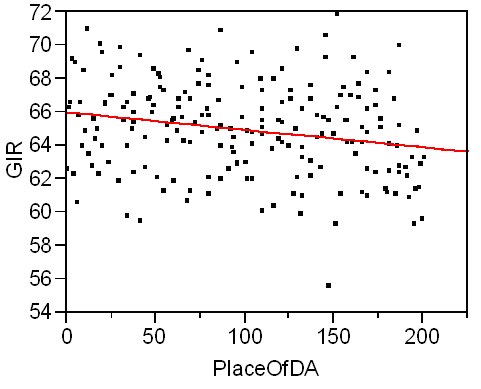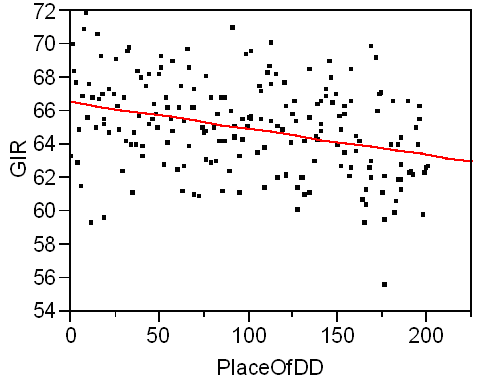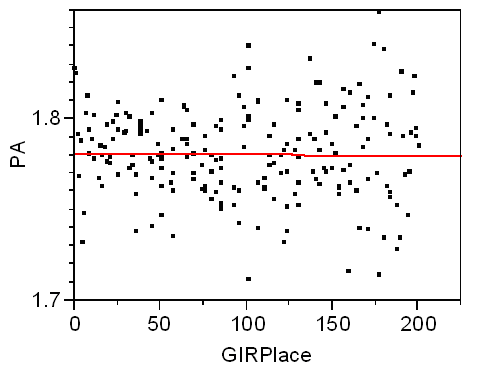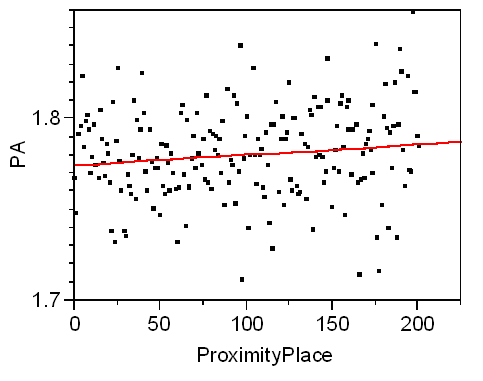 In the past week or so there has been a good discussion in the forum and a comment in last week’s Numbers Game (thanks to valued reader Rafi). One sparked a lengthy discussion and the other peaked my thirst for all things numbers related.
In the past week or so there has been a good discussion in the forum and a comment in last week’s Numbers Game (thanks to valued reader Rafi). One sparked a lengthy discussion and the other peaked my thirst for all things numbers related.
In the heat of the “Drive for show, putt for dough” thread, I thought some things through. GIR is important, but driving is a component. The question is which part, accuracy or distance, is a more critical component. The second area had to do with GIR and its relationship to putting stats. The question raised was, if you hit more greens do your putting stats suffer? Read on and I’ll answer that.
Fairways and Greens
Other than a par 3, hitting a GIR relies on “good” driving. After reading the thread in the forum, I really wanted to find out if driving accuracy (DA) or driving distance (DD) had more of an effect. I have a hunch, but let’s see what the numbers say.
First I plotted DA against GIR. In the graph below you can see that as a players place in DA gets better, their GIR percent goes up.

Again, this is something we would expect and only half of the answer to the question I had. Next, we’ll plot DD against GIR and see if the line slopes a little more or a little less.

We see another sloping graph. This time, it is a little more severe and meaningful. DD has a slight advantage over DA when it comes to its effect on GIR. This was my hunch because in previous research, when looking at the different stats, DD was always correlated slightly more to earnings and scoring than DA did.
So, the numbers say that more accurate and longer drives help GIR (duh). Length may help more than accuracy, but if you ask me, I don’t this means swinging from your shoes is the answer. If accuracy suffers greatly, it will more than offset the gains in distance. Just keep that in mind the next time you try and squeeze off a long drive.
Greens and Putting
I talked previously about how DD was always slightly ahead of DA. Well, putting has always been more important than both of those. The other loose end was finding out if GIR negatively affected putting. Rafi thought it would.
It made sense at first glance. A person that hits more greens can leave themselves longer opportunities and more chances to three putt. Sergio definitely fit that category and would seem to prove the theory single-handedly! All that was left to do is to see if the rest of the PGA Tour did as well. Below is a graph of GIR vs PA.

An absolute flatline. Hitting more greens means nothing when it comes to putting. This was a bit surprising. I thought that Rafi’s logic did make sense, but in the end I guess it doesn’t make much of a difference to a great putter. Now I wonder if proximity doesn’t make a difference either…

OK. That’s a bit better. So hitting it closer does help your putting. That makes sense. I got a little worried for a second there. The slope of the graph isn’t too severe, but at least it is there.
So two things that were puzzling me a bit are much clearer. These litte tidbits of information are helpful in future research. Next year, I’ll try and put some of these tidbits together into something more comprehensive. I’ll be off for a couple weeks, as will most everyone else for the holidays. If you have any suggestions or ideas for next year, please drop me an email or add a comment below.

These numbers are from PGA, right?
From the flatline on PA and GIR I’d guess, that the PA stats you’re using could be putting stats per GIR? Just a guess. Anyway – there is one thing missing IMHO. I don’t think you have access to “putting statistics when GIR is not true, but there is a up and down possibility”. These numbers I think should show something like 1.3 putts avg and will support my theory 😉
If you consistently hitting the greens you can’t help but the proximity will increase. If you’re chipping most of the time – your proximity will be smaller.